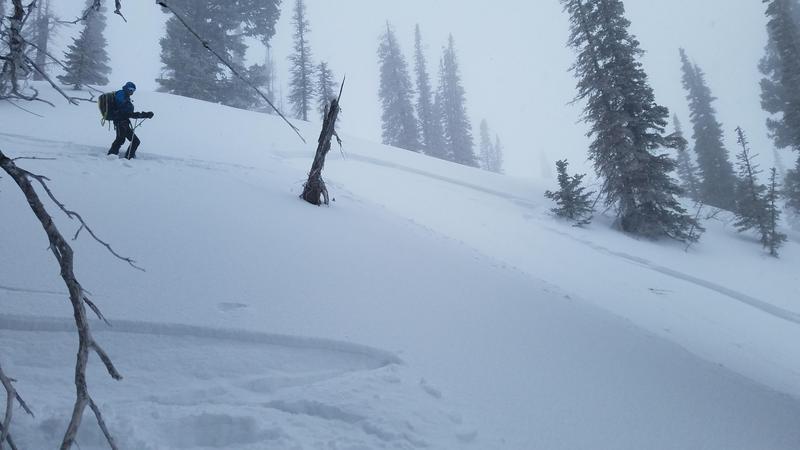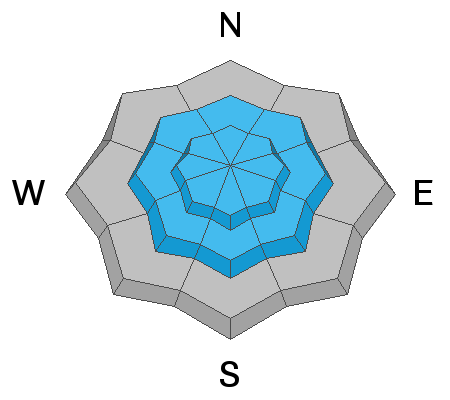Discounted lift tickets - Thanks to the generous support of our Utah ski resorts and Ski Utah, all proceeds from these ticket sales go towards paying for avalanche forecasting and education! Get your tickets
here.
This morning, mountain temperatures are in the upper teens and low-20s F at trailheads, and mid teens F at upper elevations. Winds have dropped off a bit, and are currently west-northwesterly and northwesterly averaging 5-15 mph with mid-elevation gusts of 30-35 mph and upper elevation gusts up to 30 mph. Last night upper elevations gusts hit over 50 mph. It is still lightly snowing.
24-hr storm totals are 8-10" snow (0.80" - 0.90" water)
Today, short periods of snow showers will continue and bring another 2-5 inches of snow before the evening. Mountain temperatures will be in the low to mid-20s F, and winds will continue to west-northwesterly and northwesterly, averaging 10-25 mph, with gusts of 25 to 45 at the highest ridgelines.
Yesterday, ski patrols triggered both shallow soft slabs and loose snow avalanches within the new snow using ski cuts and explosives.
In the backcountry, widespread cracking and avalanches were reported.
On
Cutler Ridge, a skier triggered avalanche was reported on a Northeast aspect at 8300’. This was a soft slab avalanche that failed on a thin layer of facets 8 inches down above the February 7th crust. This avalanche was 100 feet wide and ran 175 feet.
Across the board, these new snow avalanches were shallow soft slabs, 5-8 inches deep. All of these avalanches were easy to trigger and ran far and fast.
Below is a video from the crown of the Cutler Ridge avalanche. See full avalanche summary
HERE.








